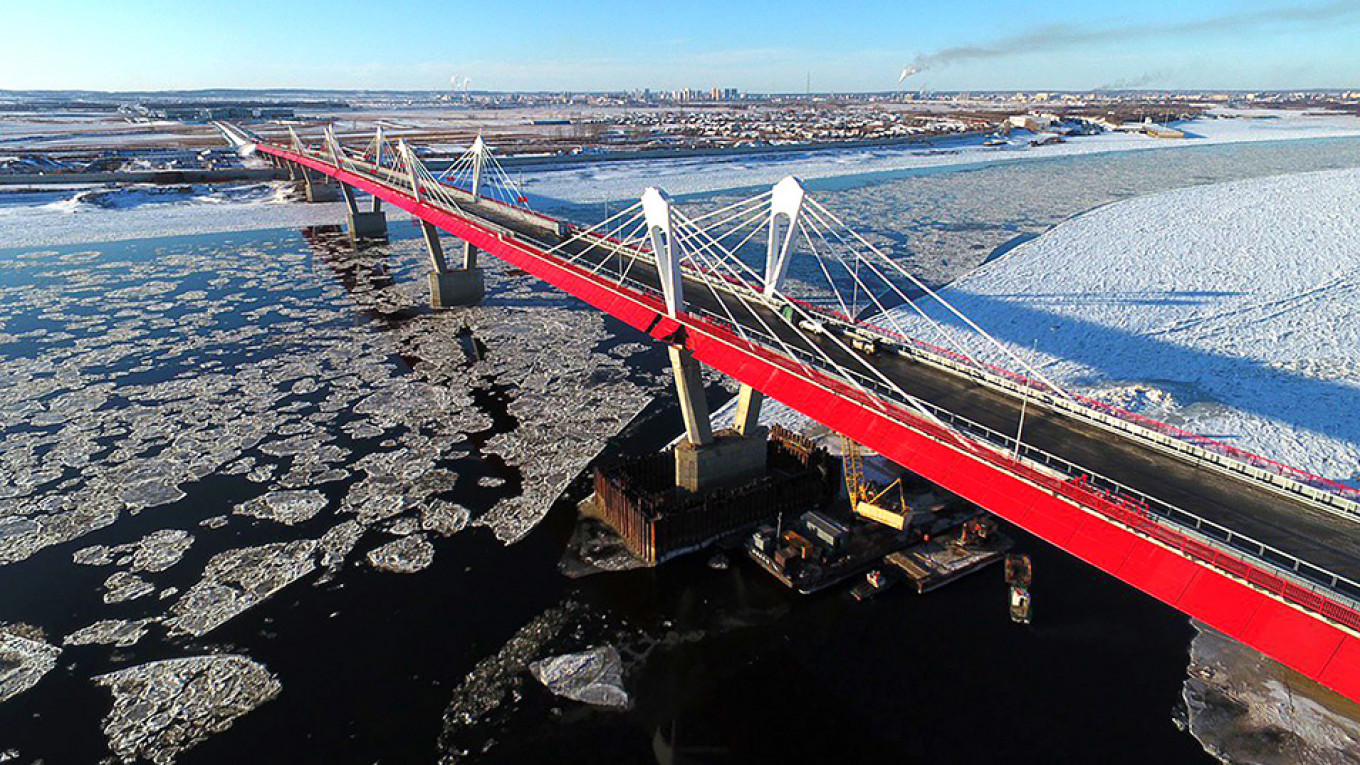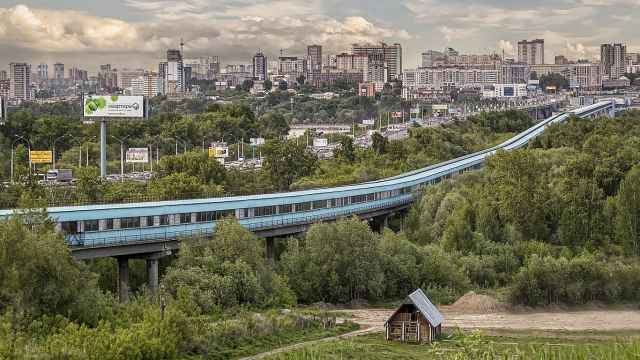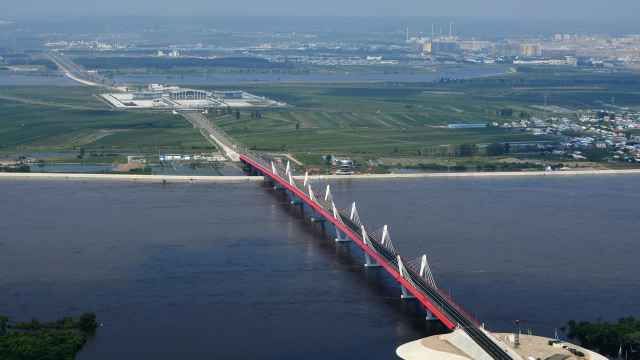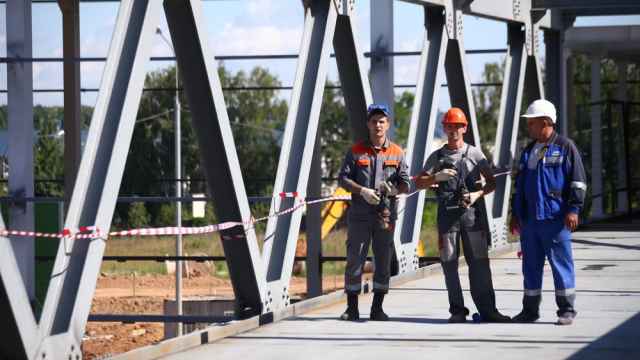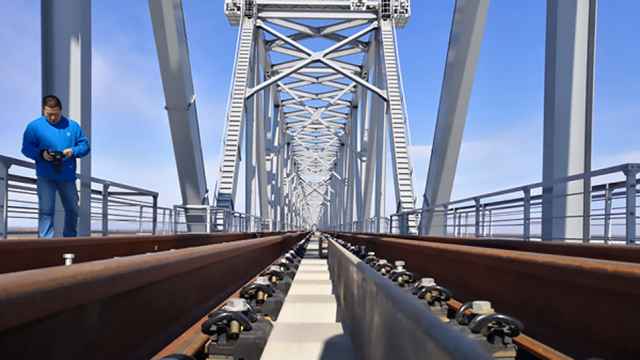Russia and China have completed the first vehicle bridge to cross the two neighbors’ border, the RBC news website reported Friday.
Footage from the bridge’s opening ceremony showed trucks crossing the bridge between the cities of Blagoveshchensk and Heihe as ice drifted underneath. Russia and China connected their sides of the bridge across the Amur River in May 2019, three years after signing the construction deal.
“This bridge opens up export opportunities for us,” Amur region governor Vasily Orlov was quoted as saying.
The Moscow Times has picked out five key facts about the two-lane highway bridge:
Preparatory work: 24 years. China and the Soviet Union first raised the prospect of connecting Blagoveshchensk and Heihe in 1988. In 1995, after the Soviet collapse, China and Russia signed a joint construction agreement and finally began construction in December 2016.
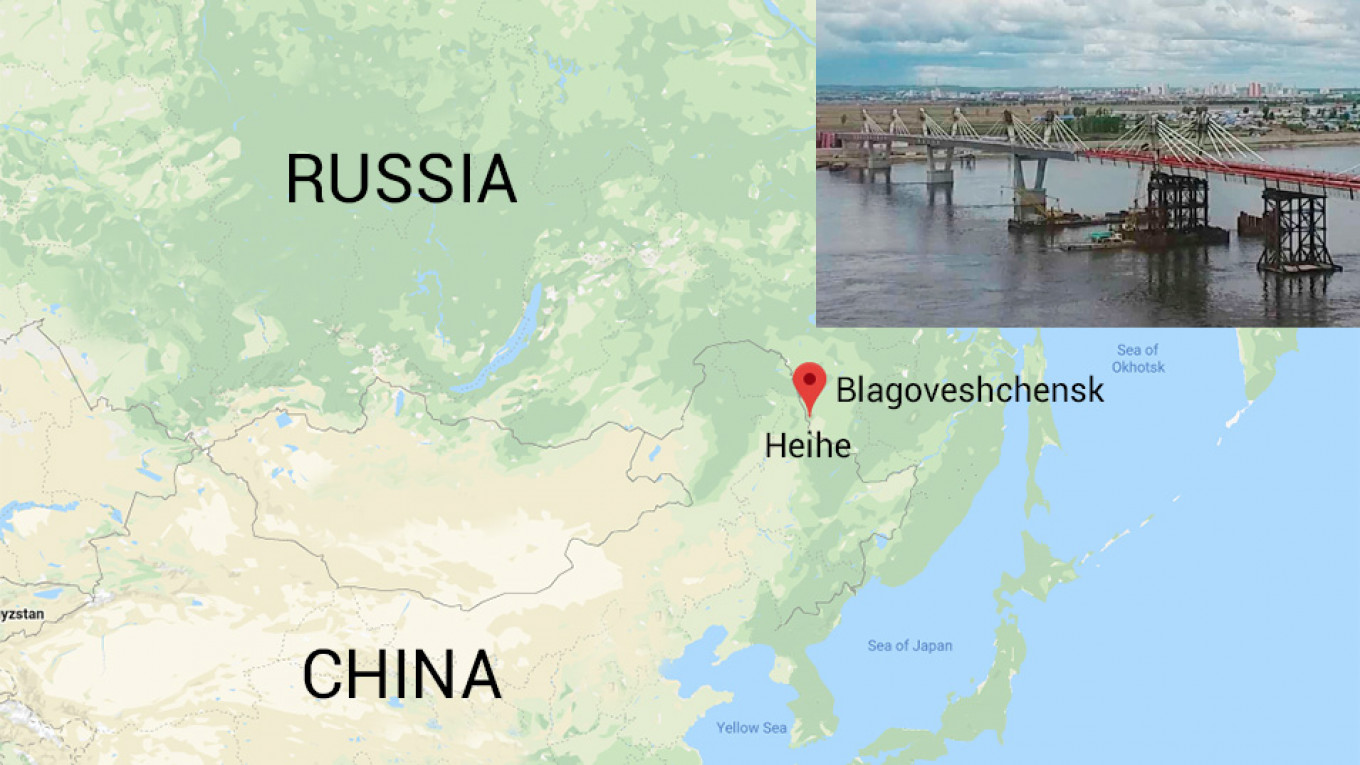
Cost: 18.8 billion rubles ($295 million).
Length: 1,080 meters, or 540 meters on the Chinese and Russian side each.
Load: 4 million metric tons of goods and 2 million Chinese tourists per year, as estimated by Russia’s minister for Far East and Arctic development.
Launch date: April 2020. Russia’s minister for Far East and Arctic development expects the bridge to open for passenger traffic in mid-2021.
Meanwhile 450 kilometers further southeast, Russia wrapped up construction of its first rail bridge to China in March 2019, half a year after China completed construction of its section across what it calls the Heilongjiang River.
Construction of the 2,200-meter bridge between the cities of Nizhneleninskoye and Tongjiang began in 2014 as Russia pivoted East amid deteriorating ties with the West.
The rail bridge is expected to serve as an international goods transportation channel with an annual shipment volume of 21 million tons.
A Message from The Moscow Times:
Dear readers,
We are facing unprecedented challenges. Russia's Prosecutor General's Office has designated The Moscow Times as an "undesirable" organization, criminalizing our work and putting our staff at risk of prosecution. This follows our earlier unjust labeling as a "foreign agent."
These actions are direct attempts to silence independent journalism in Russia. The authorities claim our work "discredits the decisions of the Russian leadership." We see things differently: we strive to provide accurate, unbiased reporting on Russia.
We, the journalists of The Moscow Times, refuse to be silenced. But to continue our work, we need your help.
Your support, no matter how small, makes a world of difference. If you can, please support us monthly starting from just $2. It's quick to set up, and every contribution makes a significant impact.
By supporting The Moscow Times, you're defending open, independent journalism in the face of repression. Thank you for standing with us.
Remind me later.


